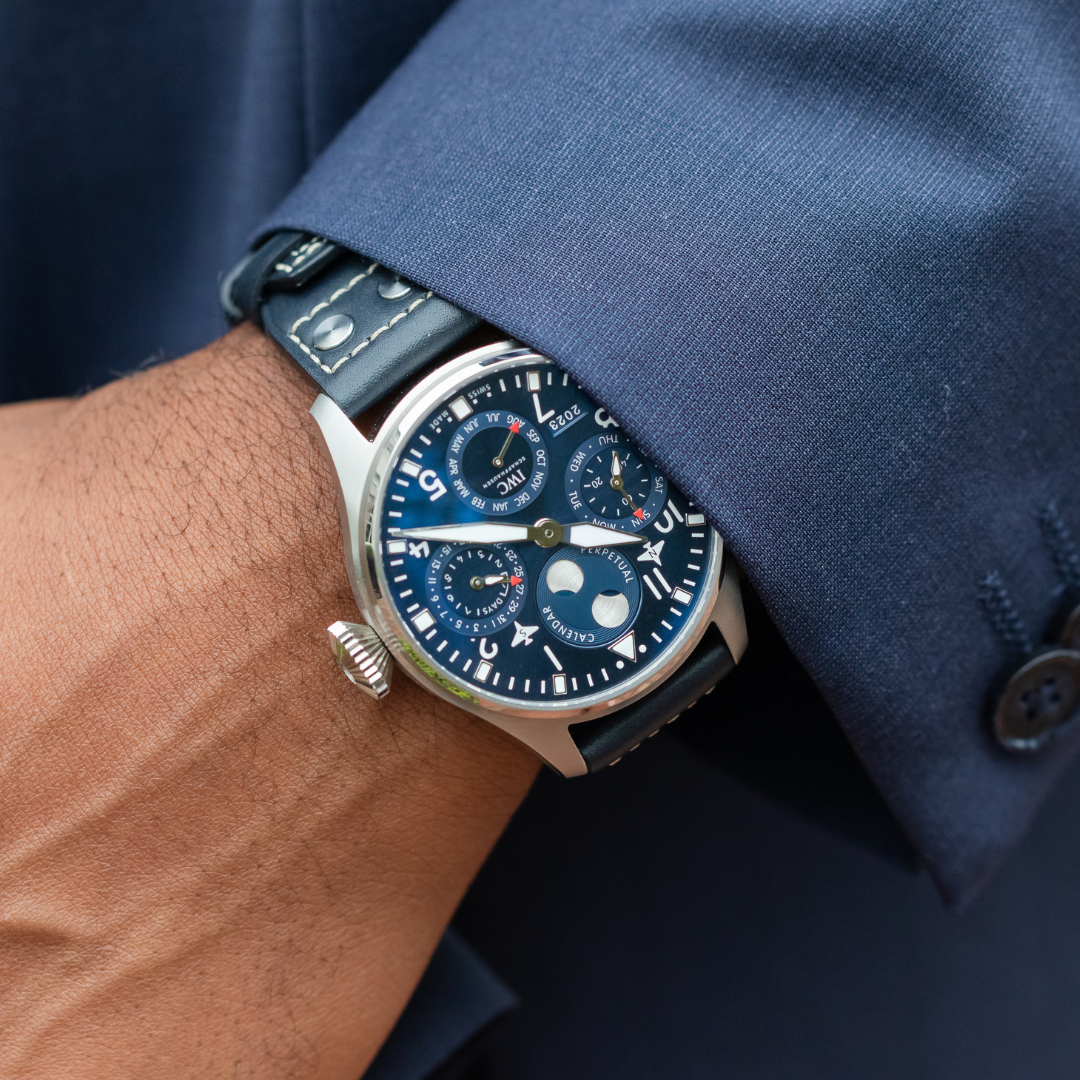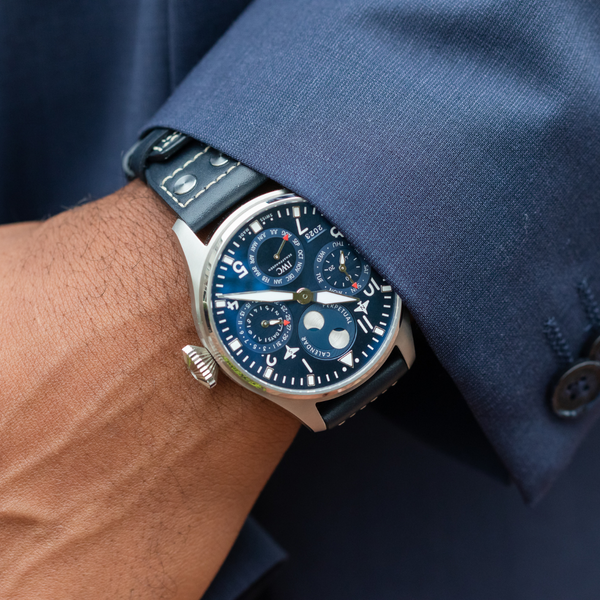
“Sure…but can it make a phone call?” That’s the tired joke that gets trotted out any time a new smartphone is introduced. But adding functions to something is not a new trend. In fact, the earliest mechanical clocks originally had only an hour hand, making the minute and second hands were ultimately the first “complications” added.
Complications refer to anything on a watch that goes beyond the expected time keeping functions. More internal mechanisms meant a watch could have more functionality. More “mechanisms” is more “complicated,” so we call those added features “complications.”

Date Complications
The most common complication is one that tells you the date and it shows up in many forms. You’ll often see it in a form known as a Date Window which is typically near the 3 o’clock position. A larger complication known as the Big Date is one that has two separate digits, one for the tens and another for the ones. As the name implies, the Big Date is also larger than most Date Windows. The Subdial Date is one that shows the date on a smaller subdial with a pointer. A Bankers Date, sometimes called a Pointers Date, have the dates on the outer edge of the dial with an extra-long hand indicating the date. Date complications also include the day of the week in the Day to Date Complication.
Calendar Complications
Like the Date Complications, Calendar Complications range from the basic to the intricate. If your watch has a Triple Calendar, it not only has the date and day of the week, it also has the month. An Annular Calendar goes one step further and adds the year. You may also come across a Perpetual Calendar which accounts for leap years.
Time Complications
Your watch can go beyond just telling time. It can tell time in any number of ways. Time Complications show up in many forms, including Dual Time Zone or Travel Complications. As the name suggests, it shows the time in two different zones for travelers. A GMT Hand is a feature that points to numbers on the bezel, indicating Greenwich Mean Time. Other watches feature a World Time Zone, which has the names of major cities in each of the 24 time zones.
Chronograph Complications
If your watch tells time, plus has a various stopwatches, these are known as Chronograph Complications. A One-Button Mono-Poussier Chronograph will have a single button that starts, stops, and resets the stopwatch. The Fly-back Chronograph was created for pilots and has ultra-precise measurements of time. Similarly, a Split-seconds/Rattrapante Chronograph has dual second hands to measure two different times. If you’re itching for speed, you’ll want a watch with a Tachymeter Scale which measures speed over time.
Watch complications span from simply telling you the day to showing you the phases of the moon. They can set an internal alarm or tell you how much power is in reserve. The features can range from novel to highly useful, and each complication adds both value and functionality to your watch. While modern smartwatches can accomplish this by simply downloading an app, watch lovers still appreciate the profound intricacy involved in many of these watch complications.
You can count us among those who have deep respect for the craftsmanship that goes into watchmaking, and we’d love to show you anything from the simple to the most complex complications at our Shreve & Co. location in Palo Alto!


